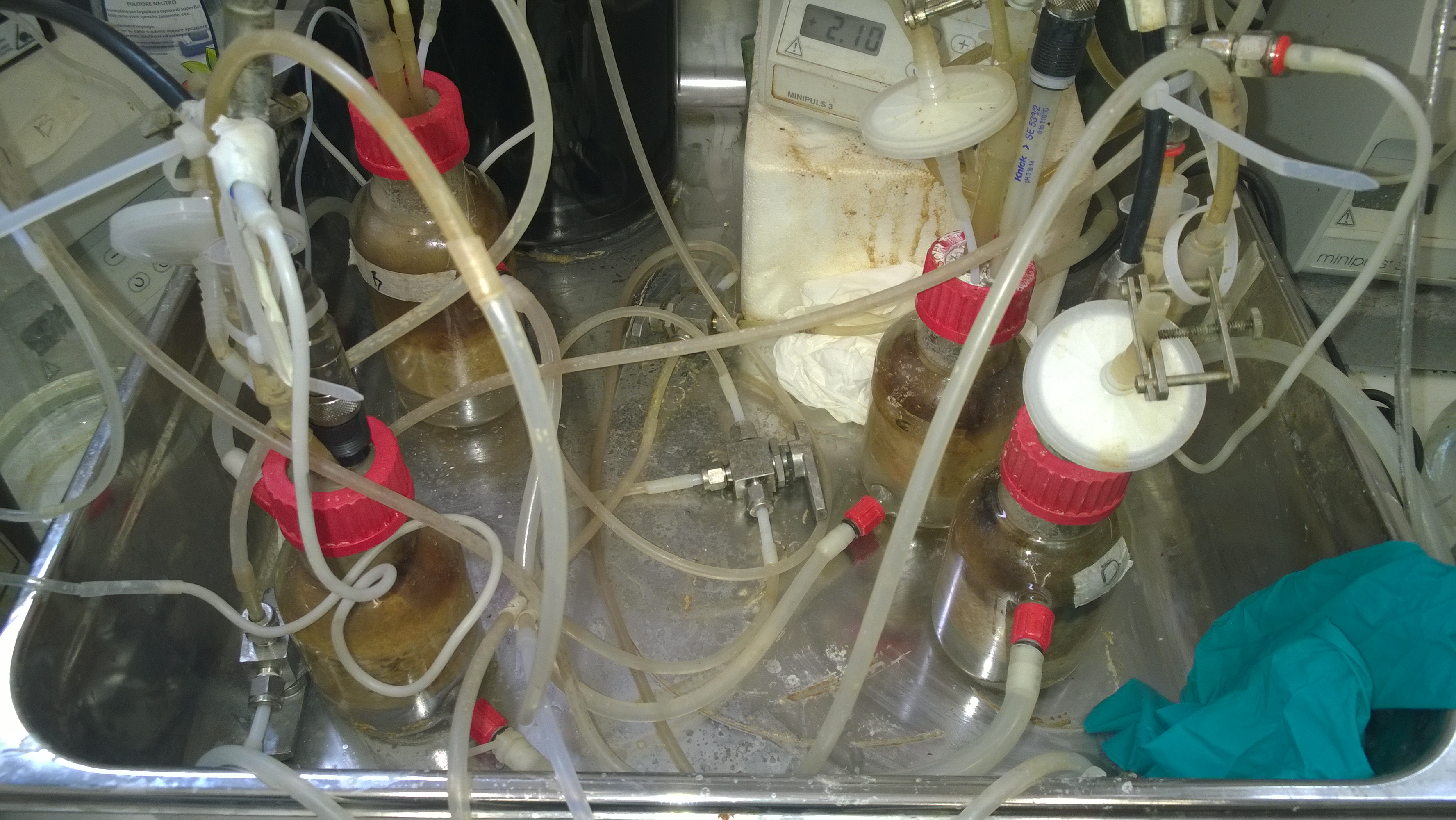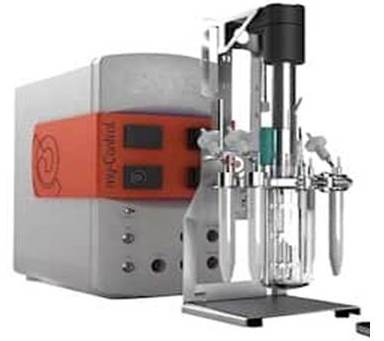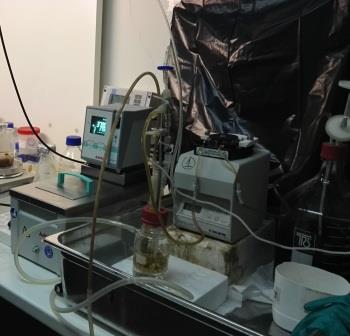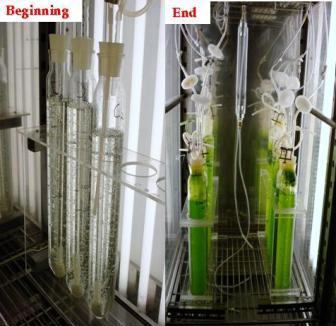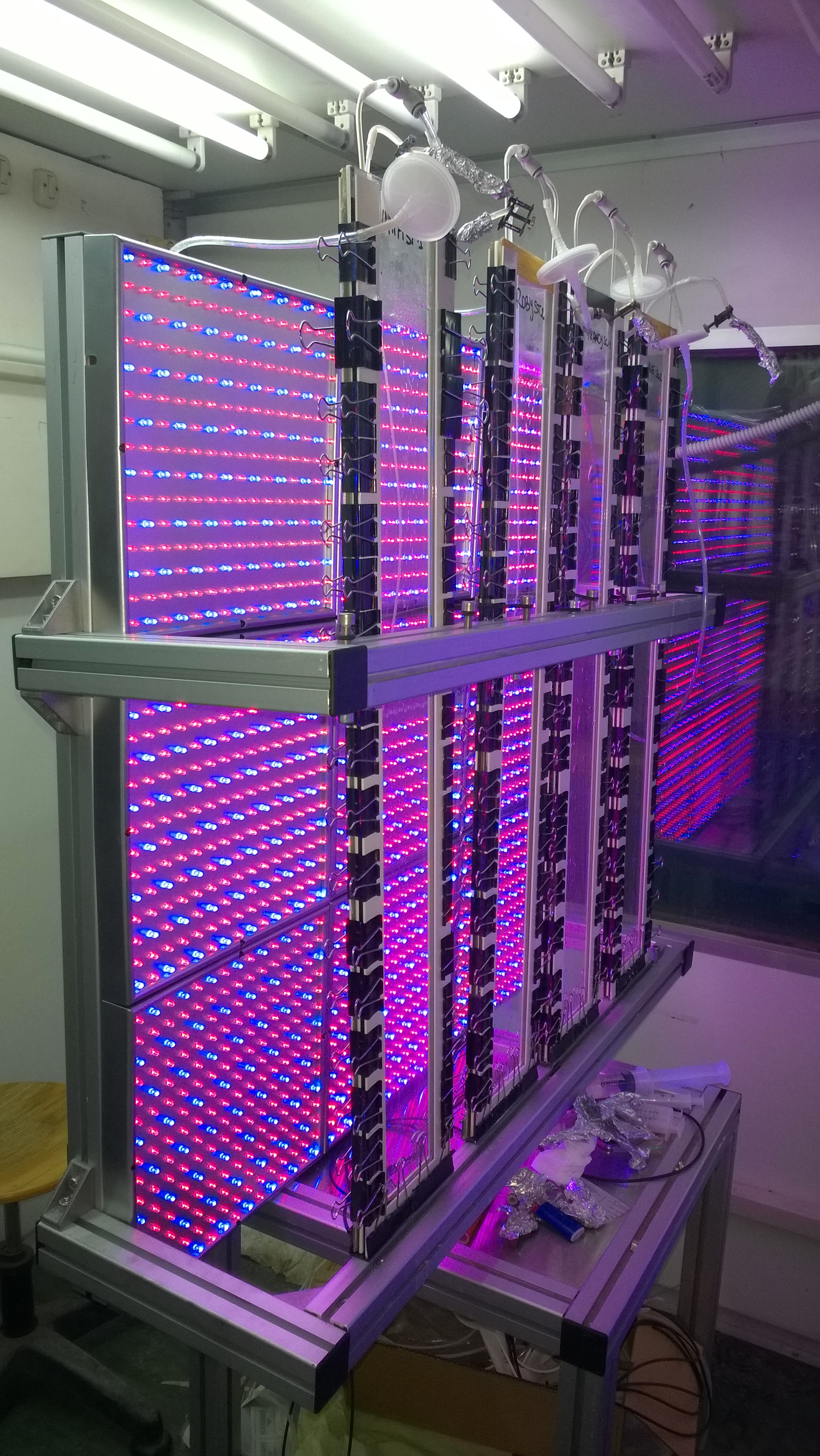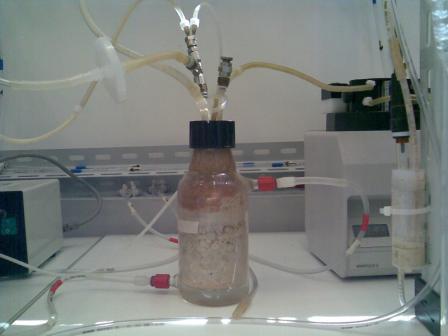
Biofilm fixed bed reactor operated
under continuous conditions
under continuous conditions
Main results
- ABE
production by fermentation of sugar-rich streams (cheese whey, fruit
residues, high sugar content beverages, lignocellulosic hudrolyzed,
....)
- Assessment of the growth kinetics of Clostridium acetobutylicum DSM 79 and of butanol production using reference sugars and complex sugars
- Butanol production process by immobilized Clostridium acetobutylicum continuous Packed Bed Biofilm Reactor (PBBR) systems.
- Integration of the continuous PBBR system with solvent recovery.
- Maximum butanol productivity 13 g/Lh @ 70 (average) g/L of butanol
- Recovery and concentration of butanol (acetone and ethanol) by adsorption
- Techno-economic assessment of the production process from agro-foof wastes
- Life Cycle Assessment
Biofilm fixed bed reactor system operated under
continuous conditions
